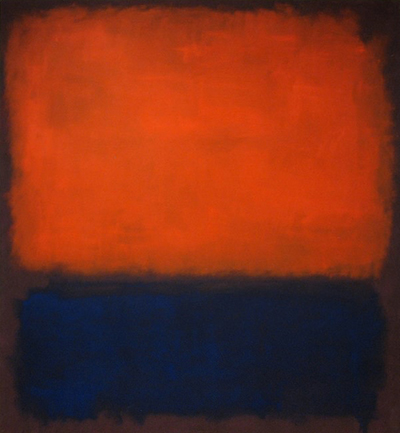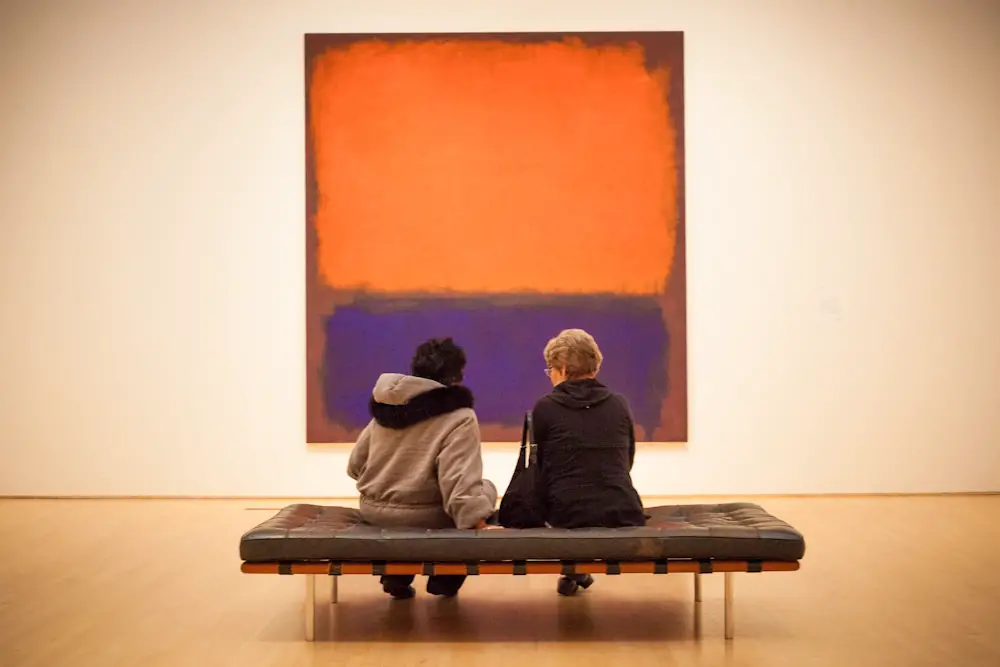Rothko emphatically rejected the reading of his work in merely formal, aesthetic terms, insisting that he was "...not interested in the relationship of color or form or anything else". Rather, he used abstract means to express "basic human emotions - tragedy, ecstasy, doom, and so on," earnestly striving to create an art of awe-inspiring intensity for a secular world. Those viewers who broke down and wept before his paintings, he stated, had "the same religious experience I had when I painted them." Scale was an enormously important factor for Rothko: as he explained in a 1951 symposium, he painted on such a large scale not in order to produce something "grandiose and pompous," but rather "precisely because I want to be intimate and human. To paint a small picture is to place yourself outside your experience, to look upon an experience as a stereopticon view or with a reducing glass. However you paint the larger picture, you are in it. It isn't something you command."
Rothko was also very particular about how his work was displayed, up until any artwork was sold on, at which point his control was lost. He liked plenty of space around each of these large items, almost treating them as portable murals. In later years he would work directly on paper and then transfer the piece onto a canvas so that it could be hung in much the same way. His biggest experimentations came in the palette that he used, and also in the number of solid forms that made up each composition, and how each one was sized in relation to each other. It is fair to say that over the period of around three decades he would exhaust all possible combinations within the Color Field approach, leaving behind a huge oeuvre that today is dispersed thinly between a series of private collections and public international art galleries and museums.
In the later 1950s and the 1960s Rothko was commissioned to produce several mural ensembles for specific interior spaces: the Four Seasons restaurant in the Seagram Building, New York (a selection of which was ultimately donated to the Tate in London as a "Rothko Room"); Harvard University's Holyoke Center; and what became known as the Rothko Chapel in Houston, Texas. Although Number 14, 1960 is an autonomous work and was not conceived with a particular site in mind, this monumental piece on such an immense scale - might be considered among the best of Rothko's true murals. Here, experienced at relatively close proximity as the artist intended, the extended format expands beyond the observer's lateral field of vision, so that the painting seems to open itself up and transcend its limits. He felt that his work in this style could attract people in, but also repel them out, depending on the precise layout of his solid forms.


